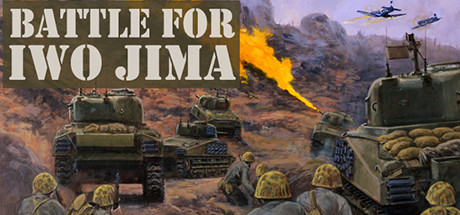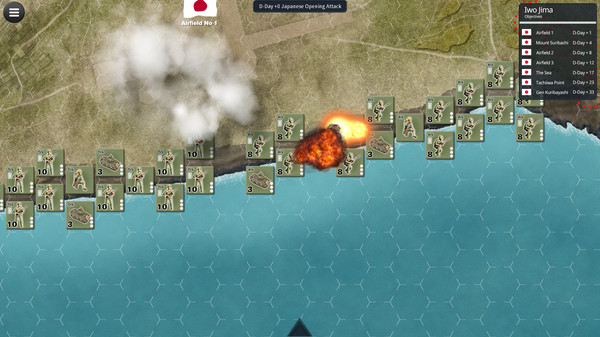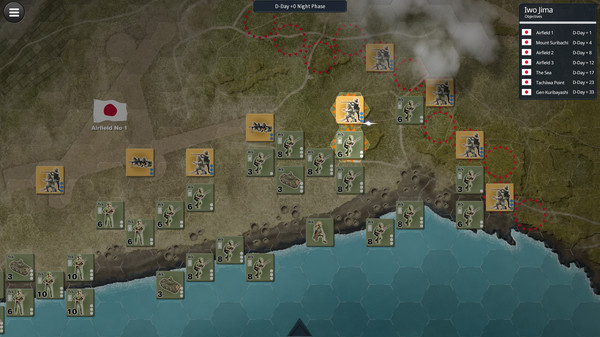France 1944
The Designer Signature edition
• One mounted game map
• One close-up Normandy game map • Two sheets of 0.65” rounded counters
• Rules booklet • Playbook with example of play and designer’s notes • Two Player Tracks Aid Cards (identical) • One Turn Procedure Card • Allied Setup and Reinforcement Displays • German Setup and Reinforcement Displays
• Two double-sided player aid cards (identical)
• Four 6-sided dice (includes two custom combat dice)
Product Information:
Complexity: 6 out of 10
Solitaire Suitability: 9 out of 10 (no hidden information)
Time Scale: Monthly turns
Map Scale: 20 miles (32 kilometers) per hex
Unit Scale: army-level HQs, infantry corps, armored divisions
Players: one to two, best with two
Playing Time: two to seven hours
The designer has a very pertinent and somewhat funny story about the physical weight of boardgames, and how we judge them on that instead on what is actually in them. I confess that I too have been a weight checker on my boardgames. It might go back to Christmas presents; who knows? He does say that this edition has been graced with a very heavy mounted map to help offset any weight issues. The Mounted Map has been extremely well made and I believe it will put up with years of use. It is also very tastefully colored and tries, and succeeds, to hit the midpoint between art and usability. There is also the smaller Normandy Map that is used in the beginning of the Campaign Scenario. This has very large hexes to deal with the congestion of the bridgehead. The two sheets of counters match the map as far as looks. They are easy to read and pop out of the cardboard effortlessly. The one thing you will notice about them is that they are based on infantry corps and armored divisions, so there will not be that many on the board at all. This is the actual breakdown:
260 Playing Pieces
15 Headquarter Pieces (7 Allied, 8 German)
100 are Combat Units (54 Allied, 46 German)
145 Informational Markers
The Rules Booklet is in full color and is very sturdy. It is twenty-four pages in length. The type is large and easy to read, and the booklet is full of illustrations. The Playbook is twenty pages long and is filled with examples of play and the scenario setups. The last page and a half are Designer's Notes and 'Reflections'. Like my other games from Compass Games that I have bought, the production values are very high. Let us now look at the scenarios included:
Falaise Gap: This is the training scenario
Market Garden: This scenario is not exactly the Market Garden Operation. In actuality it is much larger and includes the fight for all of France. This scenario is 4 turns long.
West Wall: This is the fight to get through the Ardennes and Hurtgen forests and ends after 9 turns. The Allies need at least 8 bridgeheads across the Rhine to win.
Scenario 4: VE Day: This is the Campaign Scenario. It is 11 turns long. The Allies need to capture 2 hexes along with Pilsen.
The original game was apparently Mr. Herman's first time using supply to activate the player's HQ's. Each turn the players place Initiative Chits equal to the value of the Supply Points Committed Marker. You also place the Administrative Chit into your chosen receptacle along with the Initiative Chits. If the player pulls an Initiative Chit he can then activate one HQ with it. After the player with Initiative makes his choices, the other player can choose to use his Reaction Points (these are accumulated each turn like the Supply Points). After all of the chits have been pulled there is a German and then an Allied Final Reaction Phase. The players determine if either side has won, and if neither side has the next turn is played.
Combat, along with movement, are very different from the strict IGO-UGO using a sequence of play. The easiest way to show this is by the Rules Booklet itself:
"Movement and combat in France 1944 do not follow the system used in many wargames in which units move in a movement phase and then fire in a combat phase.
This is the concise explanation on the increment system:
"The purpose of the increment is to simulate a certain amount of simultaneity on the battlefield. The Increment system essentially prohibits you from spending the entire Movement Point Allowance of a single unit without spending at least a portion of the Movement Point Allowance for every other commanded unit, even if those other units do nothing.
Time has passed while one of your armored divisions moved up the road, and that passage of time is being applied to each of your units."
The whole process seems much harder then it is in actuality. One of the things it forces the player to do is to really think through what he wants to do. The Rules Booklet gives an extra piece of advice "Acquaint yourself with this track!" I wholeheartedly agree. It is the cornerstone of the game. The litmus test of any rule in any rulebook is "does it work" and secondly, does it make the player play historically, or for want of a better term, correctly. Yes, the increment system does work. You can see that in the fact that this game has been rereleased after first seeing the light of day in 1986! The designer is Mark Herman; need we say more? The game was originally released by Victory Games, who to my knowledge and memory never released a bad or even mediocre game.
Combat is equally different than in other games. You do not deal with a straight CRT to determine victory or defeat. In this game you use a 'Combat Matrix'. This again looks to be tricky, but is pretty straight forward in its use.
Apparently the designer changed the combat results from a normal CRT in the original game to what you see here. The game's original CRT caused a lot of gnashing of teeth on the internet. Mr. Herman does believe they worked correctly, but mainly wanted to streamline the combat results and incorporate his new ideas on the Combat Matrix. Once again, Compass Games has taken an older game and recast it into their mold, meaning that they have given the game the red carpet treatment. The game map and pieces etc. all reflect the normal Compass Games manufacturing of these items. The game was an excellent choice to bring back to the wargaming community in this great fashion. The image below is an early design of the map for the complimentary game Russia 1944. This will hook up with France 1944 and is scheduled for 2021.
https://www.compassgames.com/france-1944-the-allied-crusade-in-europe-designer-signature-edition.html
This errata was added to the box:
Since Mobile Combat is only possible in Clear Terrain, or a fortress or city on clear terrain when at least one of the units in that hex retreated into that hex, there is no terrain modifier for Mobile Combat. Terrain modifier applies only to Set-piece Combat. This clarification takes precedence over the rules.
Robert























































Follow Us